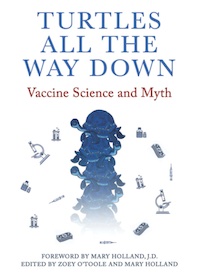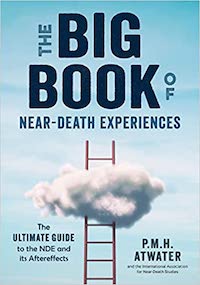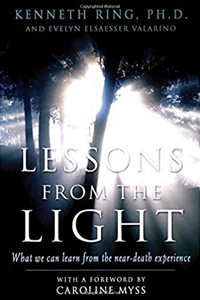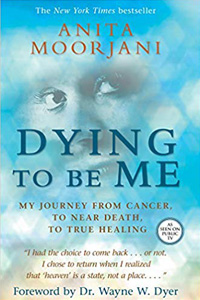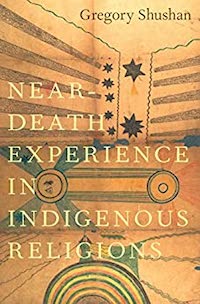……………..
Do Naked Mole Rats Hold The Secret To Cancer & Dementia Cures?
……………..
Scientists Reverse Aging In Mice & Seek To Do The Same For Humans
……………..
Quotes From David Sinclair:
“If we reverse aging, these diseases should not happen. We have the technology today to be able to go into your hundreds without worrying about getting cancer in your 70s, heart disease in your 80s and Alzheimer’s in your 90s.”
“I believe that in the future, delaying and reversing aging will be the best way to treat the diseases that plague most of us.”
“Somehow the cells know the body can reset itself, and they still know which genes should be on when they were young.”
“It’s a loss of information that drives aging cells to forget how to function, to forget what type of cell they are. And now we can tap into a reset switch that restores the cell’s ability to read the genome correctly again, as if it was young.”
While we wait for science to determine if we too can reset our genes, there are many other ways to slow the aging process and reset our biological clocks.
“The top tips are simply: Focus on plants for food, eat less often, get sufficient sleep, lose your breath for 10 minutes three times a week by exercising to maintain your muscle mass, don’t sweat the small stuff and have a good social group.”
Sinclair keeps his starches and sugars to a minimum and gave up desserts at age 40 (although he does admit to stealing a taste on occasion). He eats a good amount of plants, avoids eating other mammals and keeps his body weight at the low end of optimal. He exercises by taking a lot of steps each day, walks upstairs instead of taking an elevator and visits the gym with his son to lift weights and jog before taking a sauna and a dip in an ice-cold pool.
……………..
The ‘Benjamin Button’ Effect: Scientists Can Reverse Aging In Mice. The Goal Is To Do The Same For Humans
By Sandee LaMotte
CNN
June 3, 2022
In molecular biologist David Sinclair’s lab at Harvard Medical School, old mice are growing young again.
Using proteins that can turn an adult cell into a stem cell, Sinclair and his team have reset aging cells in mice to earlier versions of themselves. In his team’s first breakthrough, published in late 2020, old mice with poor eyesight and damaged retinas could suddenly see again, with vision that at times rivaled their offspring’s.
“It’s a permanent reset, as far as we can tell, and we think it may be a universal process that could be applied across the body to reset our age,” said Sinclair, who has spent the last 20 years studying ways to reverse the ravages of time.
“If we reverse aging, these diseases should not happen. We have the technology today to be able to go into your hundreds without worrying about getting cancer in your 70s, heart disease in your 80s and Alzheimer’s in your 90s.” Sinclair told an audience at Life Itself, a health and wellness event presented in partnership with CNN.
“This is the world that is coming. It’s literally a question of when and for most of us, it’s going to happen in our lifetimes,” Sinclair told the audience.
“His research shows you can change aging to make lives younger for longer. Now he wants to change the world and make aging a disease,” said Whitney Casey, an investor who is partnering with Sinclair to create a do-it-yourself biological age test.
While modern medicine addresses sickness, it doesn’t address the underlying cause, “which for most diseases, is aging itself,” Sinclair said. “We know that when we reverse the age of an organ like the brain in a mouse, the diseases of aging then go away. Memory comes back; there is no more dementia.
“I believe that in the future, delaying and reversing aging will be the best way to treat the diseases that plague most of us.”
A Reset Button
In Sinclair’s lab, two mice sit side by side. One is the picture of youth, the other gray and feeble. Yet they are brother and sister, born from the same litter — only one has been genetically altered to age faster.
If that could be done, Sinclair asked his team, could the reverse be accomplished as well? Japanese biomedical researcher Dr. Shinya Yamanaka had already reprogrammed human adult skin cells to behave like embryonic or pluripotent stem cells, capable of developing into any cell in the body. The 2007 discovery won the scientist a Nobel Prize, and his “induced pluripotent stem cells,” soon became known as “Yamanaka factors.”
However, adult cells fully switched back to stem cells via Yamanaka factors lose their identity. They forget they are blood, heart and skin cells, making them perfect for rebirth as “cell du jour,” but lousy at rejuvenation. You don’t want Brad Pitt in “The Curious Case of Benjamin Button” to become a baby all at once; you want him to age backward while still remembering who he is.
Labs around the world jumped on the problem. A study published in 2016 by researchers at the Salk Institute for Biological Studies in La Jolla, California, showed signs of aging could be expunged in genetically aged mice, exposed for a short time to four main Yamanaka factors, without erasing the cells’ identity.
But there was a downside in all this research: In certain situations, the altered mice developed cancerous tumors.
Looking for a safer alternative, Sinclair lab geneticist Yuancheng Lu chose three of the four factors and genetically added them to a harmless virus. The virus was designed to deliver the rejuvenating Yamanaka factors to damaged retinal ganglion cells at the back of an aged mouse’s eye. After injecting the virus into the eye, the pluripotent genes were then switched on by feeding the mouse an antibiotic.
“The antibiotic is just a tool. It could be any chemical really, just a way to be sure the three genes are switched on,” Sinclair said. “Normally they are only on in very young developing embryos and then turn off as we age.”
Amazingly, damaged neurons in the eyes of mice injected with the three cells rejuvenated, even growing new axons, or projections from the eye into the brain. Since that original study, Sinclair said his lab has reversed aging in the muscles and brains of mice and is now working on rejuvenating a mouse’s entire body.
“Somehow the cells know the body can reset itself, and they still know which genes should be on when they were young,” Sinclair said. “We think we’re tapping into an ancient regeneration system that some animals use — when you cut the limb off a salamander, it regrows the limb. The tail of a fish will grow back; a finger of a mouse will grow back.”
That discovery indicates there is a “backup copy” of youthfulness information stored in the body, he added.
“I call it the information theory of aging,” he said. “It’s a loss of information that drives aging cells to forget how to function, to forget what type of cell they are. And now we can tap into a reset switch that restores the cell’s ability to read the genome correctly again, as if it was young.”
While the changes have lasted for months in mice, renewed cells don’t freeze in time and never age (like, say, vampires or superheroes), Sinclair said. “It’s as permanent as aging is. It’s a reset, and then we see the mice age out again, so then we just repeat the process.
“We believe we have found the master control switch, a way to rewind the clock,” he added. “The body will then wake up, remember how to behave, remember how to regenerate and will be young again, even if you’re already old and have an illness.”
Studies on whether the genetic intervention that revitalized mice will do the same for people are in early stages, Sinclair said. It will be years before human trials are finished, analyzed and, if safe and successful, scaled to the mass needed for a federal stamp of approval.
Science Already Knows How To Slow Human Aging
While we wait for science to determine if we too can reset our genes, there are many other ways to slow the aging process and reset our biological clocks, Sinclair said.
“The top tips are simply: Focus on plants for food, eat less often, get sufficient sleep, lose your breath for 10 minutes three times a week by exercising to maintain your muscle mass, don’t sweat the small stuff and have a good social group,” Sinclair said.
All these behaviors affect our epigenome, proteins and chemicals that sit like freckles on each gene, waiting to tell the gene “what to do, where to do it, and when to do it,” according to the National Human Genome Research Institute. The epigenome literally turns genes on and off.
What controls the epigenome? Human behavior and one’s environment play a key role. Let’s say you were born with a genetic predisposition for heart disease and diabetes. But because you exercised, ate a plant-focused diet, slept well and managed your stress during most of your life, it’s possible those genes would never be activated. That, experts say, is how we can take some of our genetic fate into our own hands.
The positive impact on our health from eating a plant-based diet, having close, loving relationships and getting adequate exercise and sleep are well documented. Calorie restriction, however, is a more controversial way of adding years to life, experts say.
Cutting back on food — without inducing malnutrition — has been a scientifically known way to lengthen life for nearly a century. Studies on worms, crabs, snails, fruit flies and rodents have found restricting calories “delay the onset of age-related disorders” such as cancer, heart disease and diabetes, according to the National Institute on Aging. Some studies have also found extensions in life span: In a 1986 study, mice fed only a third of a typical day’s calories lived to 53 months — a mouse kept as a pet may live to about 24 months.
Studies in people, however, have been less enlightening, partly because many have focused on weight loss instead of longevity. For Sinclair, however, cutting back on meals was a significant factor in resetting his personal clock: Recent tests show he has a biological age of 42 in a body born 53 years ago.
“I’ve been doing a biological test for 10 years now, and I’ve been getting steadily younger for the last decade,” Sinclair said. “The biggest change in my biological clock occurred when I ate less often — I only eat one meal a day now. That made the biggest difference to my biochemistry.”
Additional Ways To Turn Back The Clock
 Sinclair incorporates other tools into his life, based on research from his lab and others. In his book Lifespan: Why We Age and Why We Don’t Have To, he writes that little of what he does has undergone the sort of “rigorous long-term clinical testing” needed to have a “complete understanding of the wide range of potential outcomes.” In fact, he added, “I have no idea if this is even the right thing for me to be doing.”
Sinclair incorporates other tools into his life, based on research from his lab and others. In his book Lifespan: Why We Age and Why We Don’t Have To, he writes that little of what he does has undergone the sort of “rigorous long-term clinical testing” needed to have a “complete understanding of the wide range of potential outcomes.” In fact, he added, “I have no idea if this is even the right thing for me to be doing.”
With that caveat, Sinclair is willing to share his tips: He keeps his starches and sugars to a minimum and gave up desserts at age 40 (although he does admit to stealing a taste on occasion). He eats a good amount of plants, avoids eating other mammals and keeps his body weight at the low end of optimal.
He exercises by taking a lot of steps each day, walks upstairs instead of taking an elevator and visits the gym with his son to lift weights and jog before taking a sauna and a dip in an ice-cold pool. “I’ve got my 20-year-old body back,” he said with a smile.
Speaking of cold, science has long thought lower temperatures increased longevity in many species, but whether it is true or not may come down to one’s genome, according to a 2018 study. Regardless, it appears cold can increase brown fat in humans, which is the type of fat bears use to stay warm during hibernation. Brown fat has been shown to improve metabolism and combat obesity.
Sinclair takes vitamins D and K2 and baby aspirin daily, along with supplements that have shown promise in extending longevity in yeast, mice and human cells in test tubes.
One supplement he takes after discovering its benefits is 1 gram of resveratrol, the antioxidant-like substance found in the skin of grapes, blueberries, raspberries, mulberries and peanuts.
He also takes 1 gram of metformin, a staple in the arsenal of drugs used to lower blood sugars in people with diabetes. He added it after studies showed it might reduce inflammation, oxidative damage and cellular senescence, in which cells are damaged but refuse to die, remaining in the body as a type of malfunctioning “zombie cell.”
However, some scientists quibble about the use of metformin, pointing to rare cases of lactic acid buildup and a lack of knowledge on how it functions in the body.
Sinclair also takes 1 gram of NMN, or nicotinamide mononucleotide, which in the body turns into NAD+, or nicotinamide adenine dinucleotide. A coenzyme that exists in all living cells, NAD+ plays a central role in the body’s biological processes, such as regulating cellular energy, increasing insulin sensitivity and reversing mitochondrial dysfunction.
When the body ages, NAD+ levels significantly decrease, dropping by middle age to about half the levels of youth, contributing to age-related metabolic diseases and neurodegenerative disorders. Numerous studies have shown restoring NAD+ levels safely improves overall health and increases life span in yeast, mice and dogs. Clinical trials testing the molecule in humans have been underway for three years, Sinclair said.
“These supplements, and the lifestyle that I am doing, is designed to turn on our defenses against aging,” he said. “Now, if you do that, you don’t necessarily turn back the clock. These are just things that slow down epigenetic damage and these other horrible hallmarks of aging.
“But the real advance, in my view, was the ability to just tell the body, ‘Forget all that. Just be young again,’ by just flipping a switch. Now I’m not saying that we’re going to all be 20 years old again,” Sinclair said.
“But I’m optimistic that we can duplicate this very fundamental process that exists in everything from a bat to a sheep to a whale to a human. We’ve done it in a mouse. There’s no reason I can think of why it shouldn’t work in a person, too.”
……………..
Related Links:
• Sunfellow Health & Healing Resource Page
• Sunfellow Health & Healing On Rumble
• Rejuvenation Of Woman’s Skin Could Tackle Diseases Of Ageing (BBC News – 04/08/22)
• Drug Reverses Age-Related Cognitive Decline Within Days (neurosciencenews.com – 12/01/20)
• Old Mice Made Young Again With New Anti-Aging Drug (SingularityHub – 04/05/17)
• Silicon Valley’s Quest to Live Forever (New Yorker – 03/27/17)
• Age Reversal Drug Could Be On Market In Three Years (SkyNews – 03/24/17)
• Scientists Reverse Ageing In Mammals And Predict Human Trials Within 10 Years (The Telegraph – 12/15/16)
• Can A Stem Cell Gene Called Nanog Reverse Aging? (Futurity – 07/27/16)
• Scientists Have Extended The Lifespan Of Mice By Up To 35 Percent – With No Adverse Effects
(ScienceAlert – 02/04/16)
• Live For Ever: Scientists Say They’ll Soon Extend Life ‘Well Beyond 120’ (The Guardian – 01/11/15)
• Google’s Project To ‘Cure Death,’ Calico, Announces $1.5 Billion Research Center (The Verge – 09/03/14)
……………..






